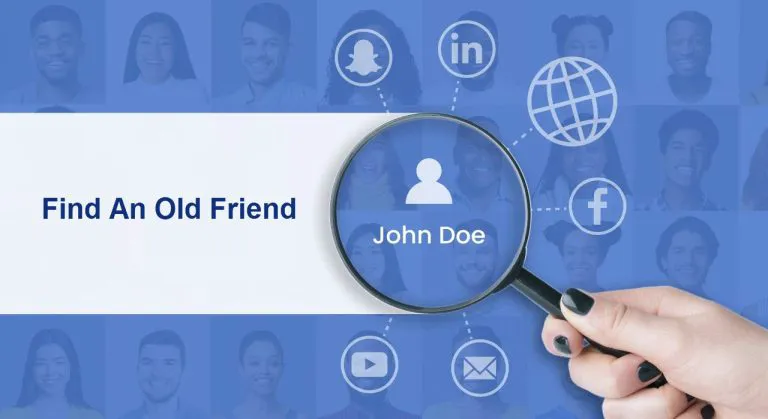How to Find the Owner of a Cell Phone Number (2025)

A mysterious phone number can spark curiosity, concern, or even fear. Whether it’s an unknown caller, a new acquaintance, or a potential threat, a reverse phone number lookup can help identify the person behind the number. But with so many different options out there, from free online tools to paid services, how do you choose the right one? This guide will help you navigate the various free and paid options to find the best tool for your needs.
Key takeaways
- Free online tools might help you discover basic caller details: Google.com, Super Easy Caller ID Lookup, FreeCallerLookup.com.
- Paid people search websites, like Intelius®, could unlock more in-depth information like the person’s address history, possible relatives, or associated social media profiles.
- Sync your contacts with social media platforms might reveal related social profiles.
- In case of harassment or fraud, reach out to authorities for help.
- Remember: no service guarantees 100% accuracy.
Method 1. Search for the number on search engines
You may find: Potential owner’s name, related institutions and businesses, scam alerts, …
Where it works: Globally
One of the easiest ways to find information about a cell phone number is to use search engines like Google and Bing. Simply enter the number into the search bar, and the search engine will pull up webpages that mention it, potentially revealing further details.
To ensure you only find results that contain the exact phone number, enclose it in quotation marks. For example, search for “(222)-***-7373” instead of just the numbers. Remember that phone numbers can be listed online in different formats. So, also search for the number without brackets or dashes, like “222***7373”. This will help you catch any instances where the number is displayed in a less standard format.
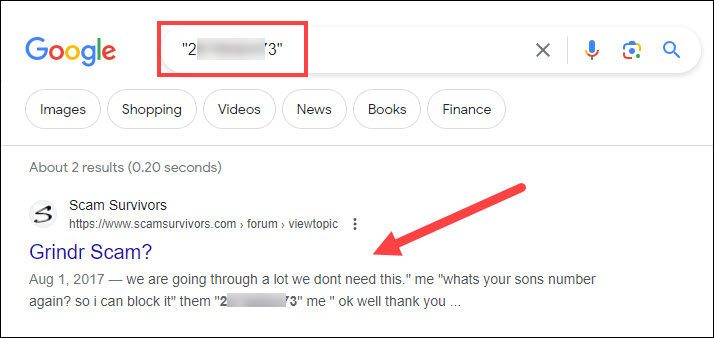
If the search engine finds a match, you can navigate to the target webpage and find if there’s any information that helps reveal the identity behind the number. Typical scenarios are the number comes from a business trying to do telemarketing, or it’s mentioned in online forums and scam alert websites, or you may bump into people search sites claiming that they recognize the caller, for which you should be aware that they may be paid services. You can look through these results extensively and seek useful details.

What types of phone numbers are easier to find their potential owners?
Phone numbers that are publicly associated with a business or organization are generally easier to find information about. Because they often list their numbers on their websites, social media, and online directories to promote themselves. Additionally, phone numbers involved in scams or unethical activities are more likely to be discussed online. That makes it easier for search engines to index and retrieve related information that helps identify the number and decide on your next moves.
![]() This method is free of charge. But it’s hard to find associated social media profiles.
This method is free of charge. But it’s hard to find associated social media profiles.
Method 2. Look for the caller ID name
You may find: Caller name, phone carrier
Where it works: Mostly US and Canada
A caller ID name (or caller name, CNAM) is the name that shows on your phone screen when you receive a call, and the service is mainly used in the US and Canada. This name might come from your contact list or be matched by your phone carrier or the caller ID app on your phone through a caller name database search. However, caller names are not always displayed, as it involves potential costs for carriers to query databases (around $0.004 per request). So caller name lookup databases offer a way to search for the caller name manually.
Option 1 – Super Easy Caller ID Lookup
Super Easy Caller ID Lookup is a handy tool for checking the caller name of a cell phone number. Simply navigate to the website, enter the phone number, and click on the search button. It will show you the caller name (if available) linked to the number and other details like its phone provider.

Option 2 – FreeCallerLookup.com
FreeCallerLookup.com is another choice to access caller name data, but it only works for US phone numbers and gives no more information than a caller name. We found that sometimes it doesn’t return results for phone numbers that do have known caller names. But we put it here anyway because it’s also free of charge.

However, it’s important to note that the caller names might not always reflect the phone number owner. In the US and Canada, there isn’t a single, centralized public database for caller names. Instead, information comes from various distributed sources like carrier-run databases. When a number is assigned, only the current carrier records the associate name. Since these databases are maintained separately by each provider, updates can be delayed. For example, if someone switches carriers and hasn’t reported the change, the caller name may be incorrect.2 Or, if a user gets a previously-owned number, the caller name might still show the former owner’s name. This is because the database takes time to update.3
![]() This method also costs no money. But sometimes the caller names might not be the phone number owners.
This method also costs no money. But sometimes the caller names might not be the phone number owners.
Method 3. Use people search websites
You may find: Potential owner’s name, contact information, associated social media profiles, address history, and more, if available
Where it works: US
People search websites are ideal for people who’d like to quickly get more details beyond just the possible owner’s name – perfect for anyone looking to do some research on others. These sites work just like regular search engines, only they focus on public information on phone numbers and individuals.
After trying out several paid options, we found Intelius to be a reliable option for phone number lookups. It has access to a wide range of public data sources, including the CNAM databases that mentioned above, government records, social media platforms, and even some exclusive channels. Plus, it will make sense of vast amounts of data and compile them into easy-to-read results.
What makes Intelius our top choice for phone number lookups?
First, Intelius consistently returned more potential owners than other paid tools, providing a wider range of potential matches. For example, in one test, it returned 5 potential owners while a popular free tool only listed one. Intelius can also provide additional phone numbers the owner might use, making it easier to reach them.
What particularly impresses us is its ability to identify the owner’s possible relatives. In fact, they hold a patent for recognizing familial relationships, which can help you uncover more about the owner’s background information.
From their reports, you could find:
Intelius can provide more potential owners associated with a cell phone number compared to a caller name search. For example, in this report, there are 6 possible owners’ names, offering more possible matches to consider. If you need to focus on the most likely, focus on the top result, as it’s ranked as the most probable match.

If a potential owner in a phone report catches your eye, Intelius can often offer a deeper dive into their background. For example, their report might include details like possible relatives, contact info, addresses, criminal and traffic records, social media pages, and more, if available.

While Google searches can be time-consuming and require a lot of information filtering, people search sites, with their access to vast amounts of public data could deliver both quick and more relevant results.
To use the service, navigate to its phone number lookup page, enter the number, and click the search button. It will then generate a report within a few moments. Note that you’ll need to register with your email address and make a subscription payment before viewing the results.
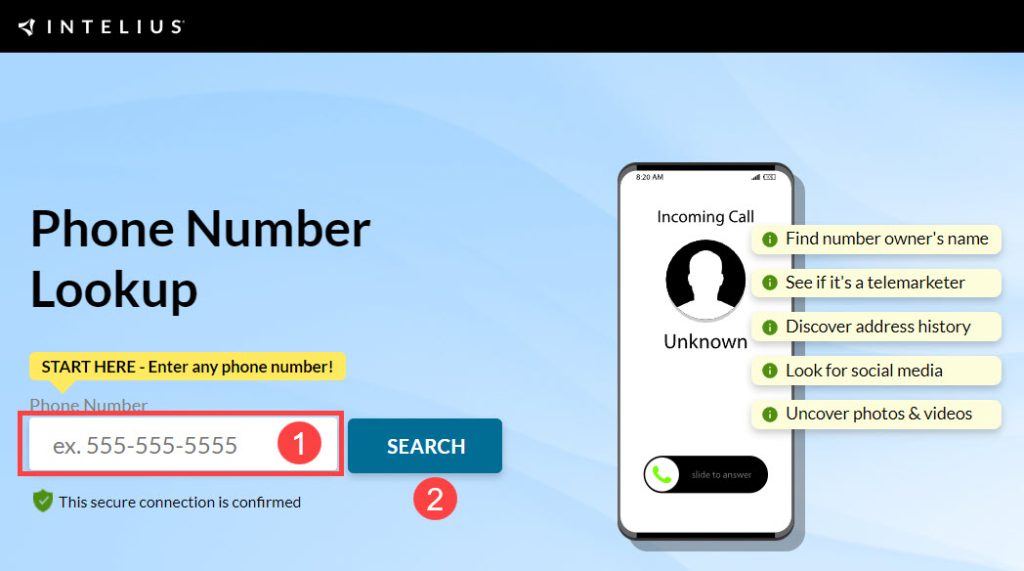
Free options
In addition to paid services, you can also try free people search sites. For example, Spy Dialer is a convenient free tool to look for the caller name information. With it, you can also listen to outbound voicemail messages (if available) without actually calling the phone number. Another free option is That’sThem, which can offer slightly more information than just a Caller Name. But it limits you to 10 free searches per day and redirects you to Spokeo, a paid service, after that. It’s important to stay informed as you use free services.

Are people search services 100% accurate?
It’s important to note that people search sites are not perfectly accurate, and reasons like outdated information, limited data access, and data matching issues can lead to this. In fact, there’s not a phone number lookup tool that guarantees 100% accuracy. You may think of people search sites as a detective’s toolkit. They can uncover valuable clues in no time, but sometimes these clues might be incomplete. Just like a detective needs to verify their findings, you should always double-check information from people search services with other sources.
![]() Read more:
Read more:
How do people search engines work?
Where do people search sites get their data?
What are the differences between paid and free options?
There’s a huge selection of people search products in the market, both free and paid. Free services can be helpful for basic searches, while paid services are often more willing to invest in improving their search technology and expanding data sources, which can potentially provide more comprehensive results.
![]() This method generally offers more promising results. But it only works for US phone numbers.
This method generally offers more promising results. But it only works for US phone numbers.
Method 4. Find clues from social media and cash apps
You may find: Potential owner’s name, related social pages, profile pictures, …
Where it works: Globally
Another way to get clues about the potential owner of a phone number is to check if it’s linked to any social media accounts. Many social media platforms require a phone number for registration, so if the number you’re looking for is associated with a social media account, you might be able to find helpful information there. To make things easier, let’s break down different social media platforms into categories.
Messaging apps
Messaging apps like WhatsApp and Telegram allow you to directly search for a phone number and view their profile photo if they’re on the platform.
This can potentially give you a visual clue about the owner. To try this on WhatsApp, open the app, tap the plus button on the top right corner, choose “Add new contact”, and enter the phone number. You’ll see their profile picture if they’re using WhatsApp and have set an avatar.

While WhatsApp doesn’t display the user’s name, you can check if you recognize them from the picture. If not, you can save the picture and use a reverse image lookup tool like Google Image to find similar pictures and possible clues about their identity.
Cash apps
Cash apps like Cash App and Venmo let you send money to someone via their phone number if they’ve used it for verification. While these apps are mainly for making transactions, they can also be a clever way to find out someone’s name. Here we take Cash App as an example.
Open your Cash App, enter a random number, and tap the Pay button. It’s best to use a small amount, like $1, for safety. Then enter the phone number you want to find the name for. If the number is linked to a Cash App account, the name will appear.
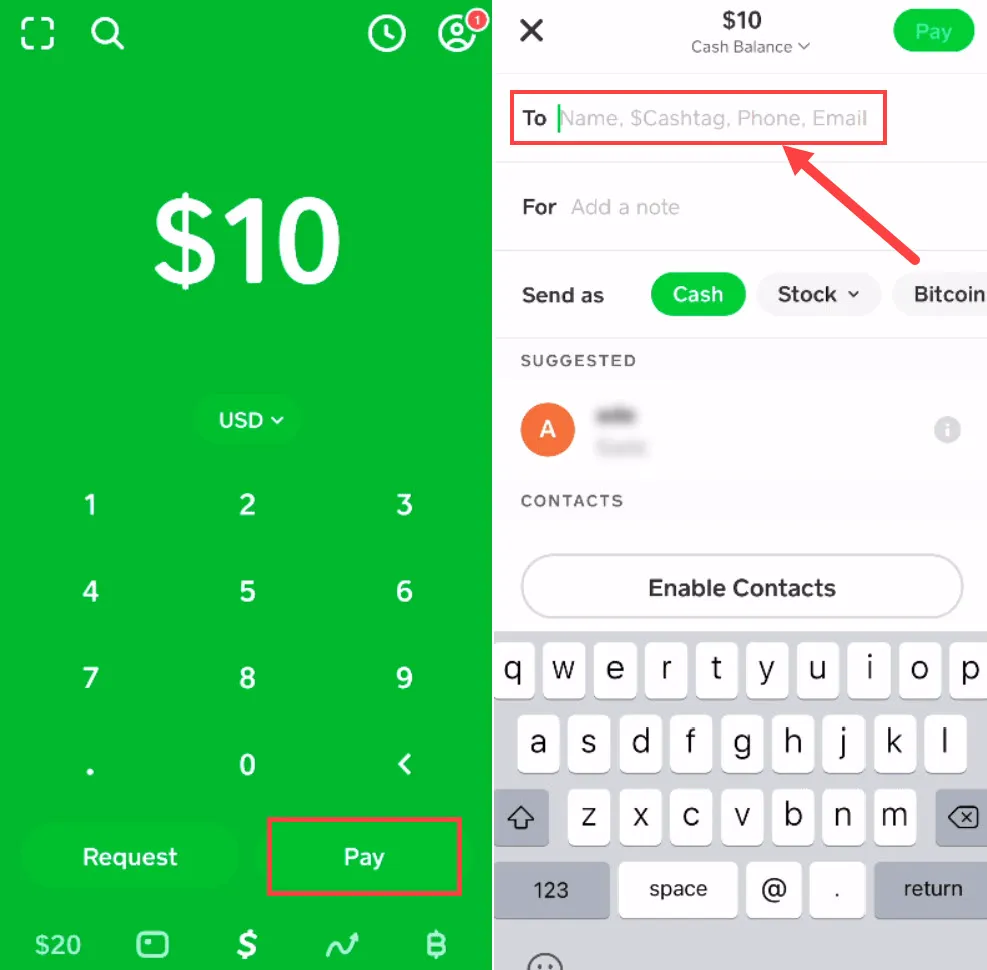
You should know that Cash App is not available in all regions (it’s primarily for US and UK users), but you can try the trick using a similar app that works in your area.
Social networking apps
Most of the popular social networking apps like Snapchat, Instagram, Facebook, and X (formerly Twitter) currently don’t support in-app phone number searches. To find a linked account, you’ll have to use their contact-syncing features. Among them, only Snapchat directly shows the profile that linked to the phone number provided. Here’s how to sync your contacts with Snapchat:
- Save the phone number in the contact list of your phone, and also add the country code in front of it.
- Open the Snapchat app on your phone.
- Tap the add friend button in the upper right corner.
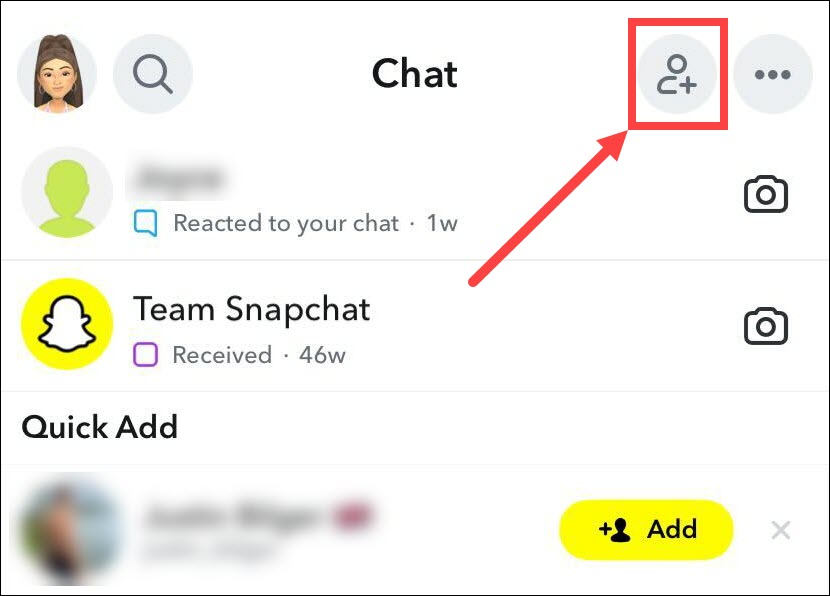
- Tap All Contacts next to Quick Add.

If Snapchat doesn’t have access to your contacts yet, you’ll see a prompt. Simply follow the instructions to grant access in your device settings. - Snapchat will show you which of your contacts are already on Snapchat, using the names you have saved for them in your phone’s contact list. So you’ll instantly know who’s who.

- If there’s a linked account, you can tap and hold the account, then select View Profile to see their Bitmoji and public profile (if available). That might help you identify the person.
What’s contact-syncing on social apps?
Contact-syncing links your phone’s contact list with the app you’re using. When enabled, the app accesses your contacts and suggests accounts to follow based on matching phone numbers or email addresses. This helps you find and connect with people you know who are already on the platform. You can turn this feature on or off in the app’s settings.
This “syncing contacts” trick also works on other social media platforms, but it’s not as clear-cut. For example, even if you sync on Instagram (and a few others), they’ll just suggest accounts randomly, and you can’t be certain which account is linked to the phone number you’re curious about.
Besides, if the person hasn’t turned on contact-syncing, or their account is registered under other phone numbers, you might not find them at all. For a simpler and more direct approach, consider using caller name lookup tools or people search services.
![]() This method provides multimedia clues about the potential owner. But it’s not working if the person doesn’t have many social media pages.
This method provides multimedia clues about the potential owner. But it’s not working if the person doesn’t have many social media pages.
Take action in case of spam, scams, and harassment
If you’re getting spam calls or text messages from random phone numbers and haven’t suffered any financial loss, the best course of action is usually to ignore them and block the number. You can also report the abuse to your phone carrier’s support team. It’s not worth your time and effort to try and identify the caller. While adding your number to the National Do Not Call Registry can help reduce telemarketing calls, many people report that it’s not always effective.4
Block the number on your phone
Open the Phone app on your device and locate the recent call or text from the number you want to block. Tap the details icon, and you’ll see a Block Caller option. Tap it and confirm your choice. Then the number is blocked and cannot call you again.
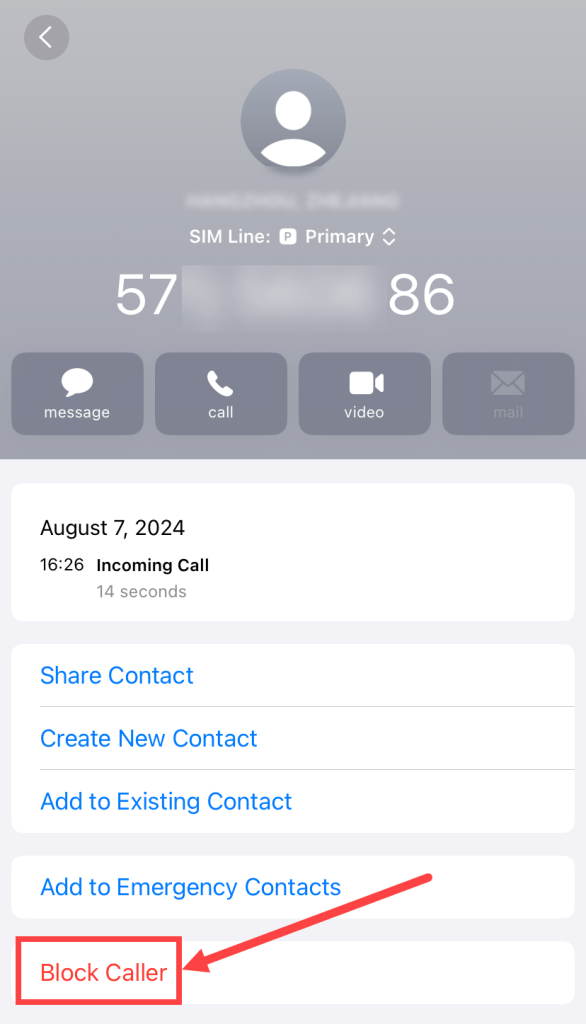
Report abuse to your phone carrier
To report a spam or scam phone number to your carrier, start by noting the number and any details about the unwanted call or message. Next, contact your carrier’s support service. You can usually find their number on their website. Explain that you received a spam or scam call and provide the phone number and details.
Many carriers also offer specific codes to report spam. For example, forwarding the message to a short code like 7726 is common. You can find instructions on this page. After reporting, your carrier may block the number or investigate further.
If you suspect a scam or even have suffered financial losses, consider reporting it to the FTC (Federal Trade Commission). The FTC is a government agency that investigates and combats fraud and unfair business practices. You can report scams and harassment online or by phone. In cases of serious threats or criminal activity, don’t hesitate to contact the police. They can investigate the matter and potentially take legal action against the offender.
Why can’t I find any information sometimes?
It’s possible that you’ve tried everything available but still can’t find any information about a specific phone number. Some common reasons can lead to this. In any of these following situations, you’re likely not to find anything useful.
- It’s tricky to identify a VoIP or burner number. These temporary or virtual numbers offer more anonymity than traditional landlines or mobile phones.
- The number might be newly assigned and not yet indexed in public directories. It takes time for information to be added to these directories.
- Some countries have strict privacy laws, allowing users to keep their information private. This means their details might not be available in public directories.
- The lookup tools you’re using might not have access to the information or the owner has opted to remove their information from public directories.
Conclusion
Finding the owner of a cell phone number isn’t always easy, but there are definitely tools and techniques you can try. Some methods might only give you a name, while others can delve deeper. It’s a good idea to try multiple options since each one comes with its strengths and limitations. Cross-referencing information gathered from different sources is often the key to piecing together a more complete picture. Ultimately, knowing more empowers you to make informed decisions. But in the process, it’s important to handle any private details ethically and avoid misuse that could hurt others’ privacy.
These websites do not provide consumer reports and they are not consumer reporting agencies as defined by the Fair Credit Reporting Act (FCRA). These websites must not be used to determine an individual’s eligibility for credit, insurance, employment, housing or any other purpose covered by the FCRA.
All product names, logos, brands, trademarks, and registered trademarks are property of their respective owners.
References
- Community [SharpDog]. (2023, September 28). SCAM Phone calls. [Online forum post]. BushcraftUSA. https://bushcraftusa.com/forum/threads/scam-phone-calls.358069/[↩]
- r/Googlevoice [snovvman]. (2023, July 2). Is it possible to correct a ported-in GV number’s CNAM? What about a free GV number? [Online forum post]. Reddit. https://www.reddit.com/r/Googlevoice/comments/14nzhvb/is_it_possible_to_correct_a_portedin_gv_numbers/[↩]
- Community [Lombie]. (2022, September 13). For me, the name of the party who previously owned the number was showing up. I submitted a ticket to… [Comment on the online forum post Caller ID]. Visible. https://community.visible.com/t5/Let-s-Chat/Caller-ID/m-p/2931/highlight/true[↩]
- r/Techsupport [TheBrain2022]. (2021, December 28). Ever since I added my name to the national do not call list, I’ve been getting a TON of spam calls, emails and texts. How do I get this to stop? [Online forum post]. Reddit. https://www.reddit.com/r/techsupport/comments/rprvjv/ever_since_i_added_my_name_to_the_national_do_not/[↩]
 View all of Arlee Hu's posts.
View all of Arlee Hu's posts.